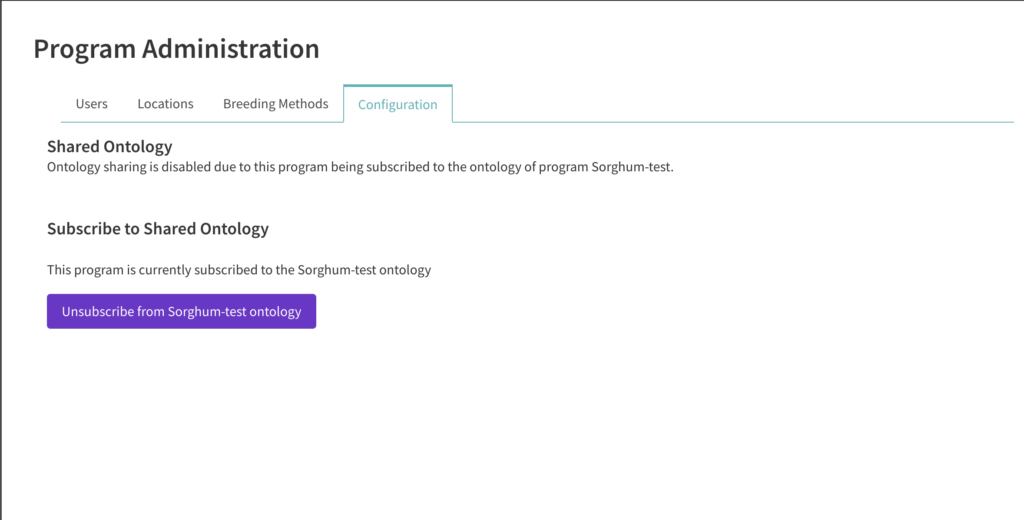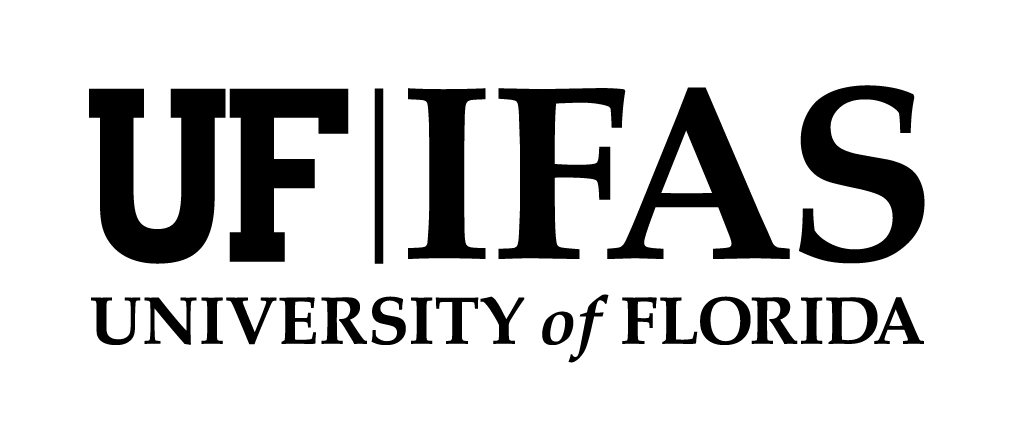Users must be added or assigned to a program to access breeding data. Only system administrators and users with a Breeder role are able to edit the program management module.
Manage Program Users #
Roles and Permissions
- Program Administrator: Have the ability to access Program Management & import/export data and assign user roles and permissions.
- Read Only: Have read-only access to programs they have been added to and cannot import data.
- Experimental Collaborator: Has read only permissions for specific experiments that have assigned by Program Administrators.
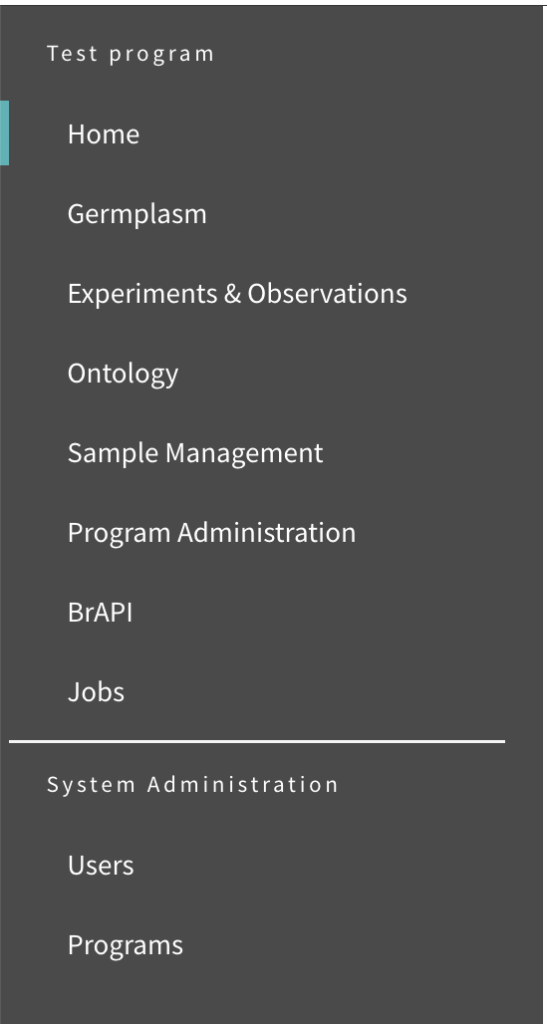
Program Administrator view of the left hand menu. Users with a Read Only role in a program will not be offered the Import Data option from the left hand menu and other places within the program. Experimental Collaborators will see only limited options in this menu.
Add New Users & Assign Roles and Permissions
By default, System Administrators have read-only access to breeding programs. If a system administrator needs to upload data into a breeding program, they must first establish themselves as a “Program Administrator” within the program.
![]() From within the breeding program of interest, navigate to Users under Program Management. Select + New user. Enter user info, including the email associated with a user’s ORCID and specify their role as either Program Administrator, Read Only or Experimental Collaborator. Save.
From within the breeding program of interest, navigate to Users under Program Management. Select + New user. Enter user info, including the email associated with a user’s ORCID and specify their role as either Program Administrator, Read Only or Experimental Collaborator. Save.
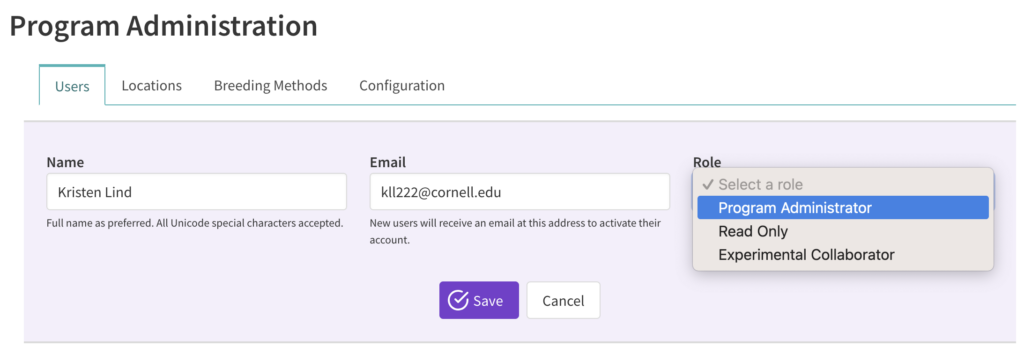
Edit User
![]() Upon successful creation of a user, select “Edit” to edit user role or “Deactivate” to deactivate the user access to program.
Upon successful creation of a user, select “Edit” to edit user role or “Deactivate” to deactivate the user access to program.

Assign an Experiment to an Experimental Collaborator
![]() Navigate to the Experiment where you wish to add a collaborator.
Navigate to the Experiment where you wish to add a collaborator.
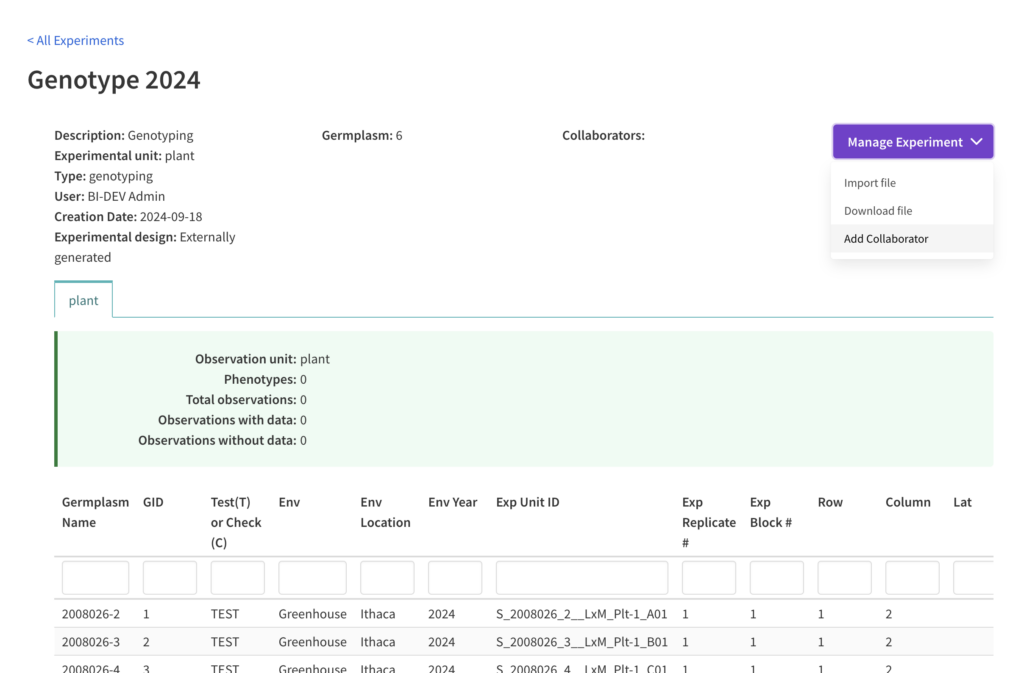
![]() Click on the purple “Manage Experiment” button. Select “add collaborator”. Choose the collaborator. Click save. Experimental Collaborators have read only/download capability within only the experiments they have been added to. They are unable to add collaborators or import data.
Click on the purple “Manage Experiment” button. Select “add collaborator”. Choose the collaborator. Click save. Experimental Collaborators have read only/download capability within only the experiments they have been added to. They are unable to add collaborators or import data.
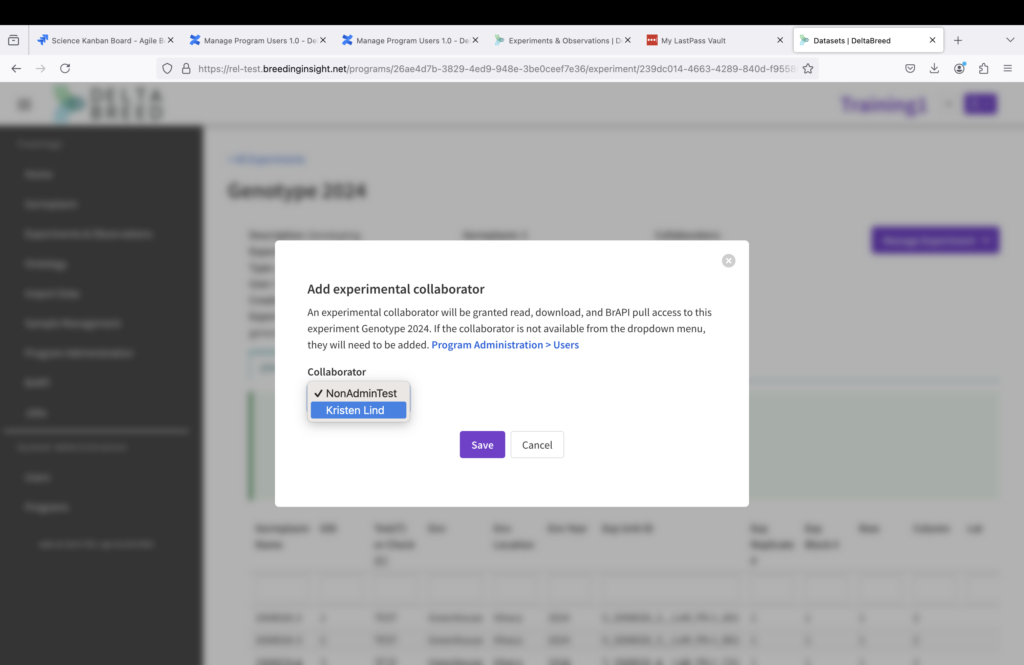
Manage Locations #
Users can review locations and add locations under program administration. Note that locations are also added to system when they are specified in an experimental import file. Adding locations through the experiment import is the recommended way to add locations to a program.
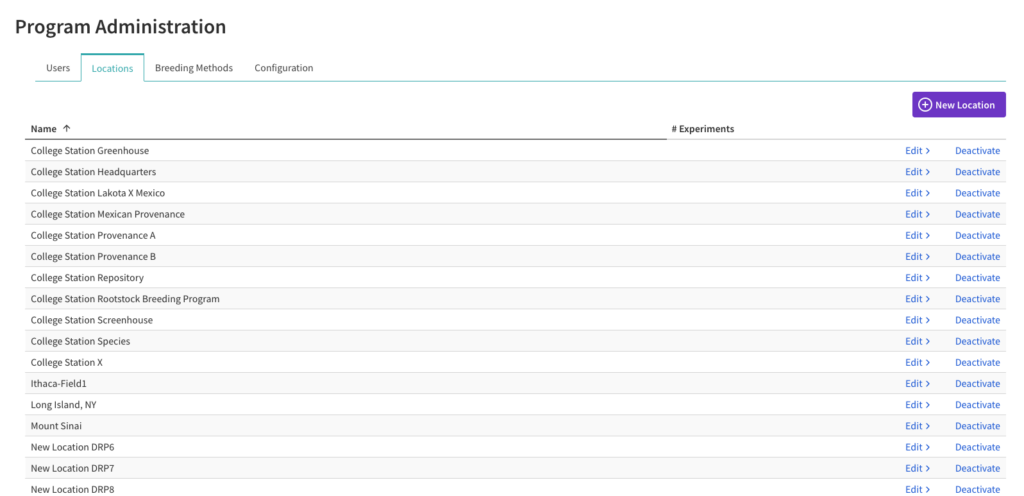
Manage Breeding Methods #
About Breeding Methods #
Breeding methods describe the formation of a new germplasm and assignment of a new GID. Generally the application of a breeding method is followed by the creation of new labels, such as seed packets to support harvest or differentiating individual fish from their siblings with RFID tags. DeltaBreed comes with a list of predefined breeding methods. The names and descriptions of the predefined breeding methods are purposefully generic to suit the needs of a variety of breeding systems. Breeding methods can include:
- Generative methods: genetic diversity is expected to increase in the new germplasm.
- Derivative methods: genetic diversity is expected to decrease in the new germplasm.
- Maintenance methods: genetic diversity is expected not to change the new germplasm.
Create Breeding Methods #
If a breeding method that is important to your program is missing from the default list or if the predefined options are too generic to be useful, you can customize your own method.
![]() Select Create Breeding Method.
Select Create Breeding Method.
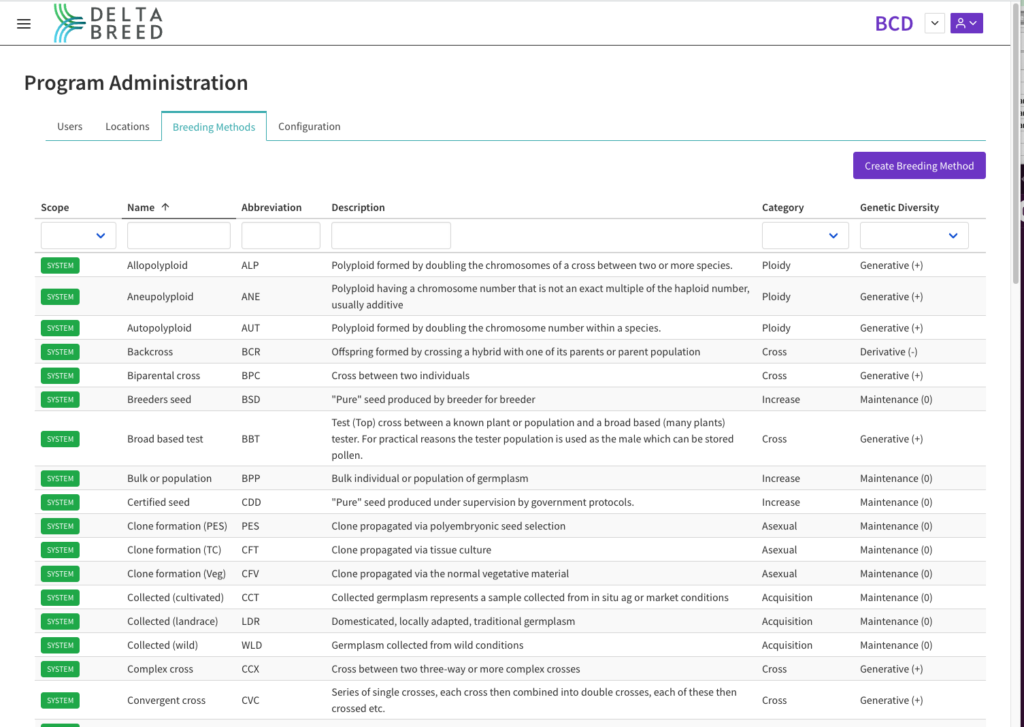
![]() Enter the details. Name and abbreviation should be unique. Save
Enter the details. Name and abbreviation should be unique. Save
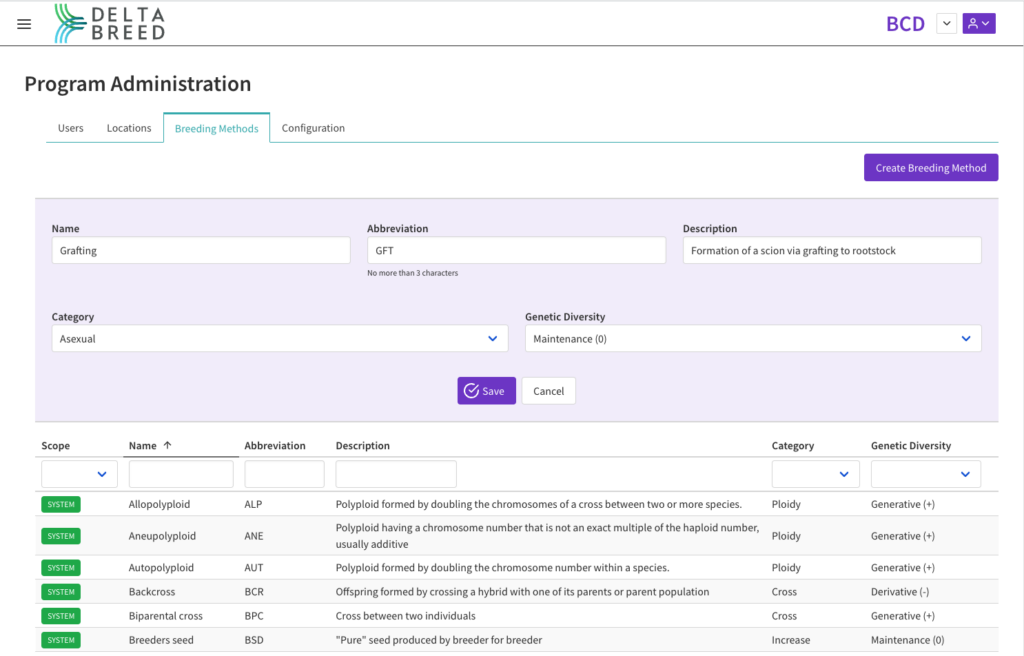
Use case: The default method, (CFV) Clone formation (Veg), might be considered too generic for a program that clones germplasm via grafting, so a custom breeding method might be preferable.
After a new method has successfully been created for the program, the method name or abbreviation can be used to describe the formation of germplasm entries (See Germplasm for more information). Note that this new breeding method will not be added to the germplasm template, but will be available for you to use.
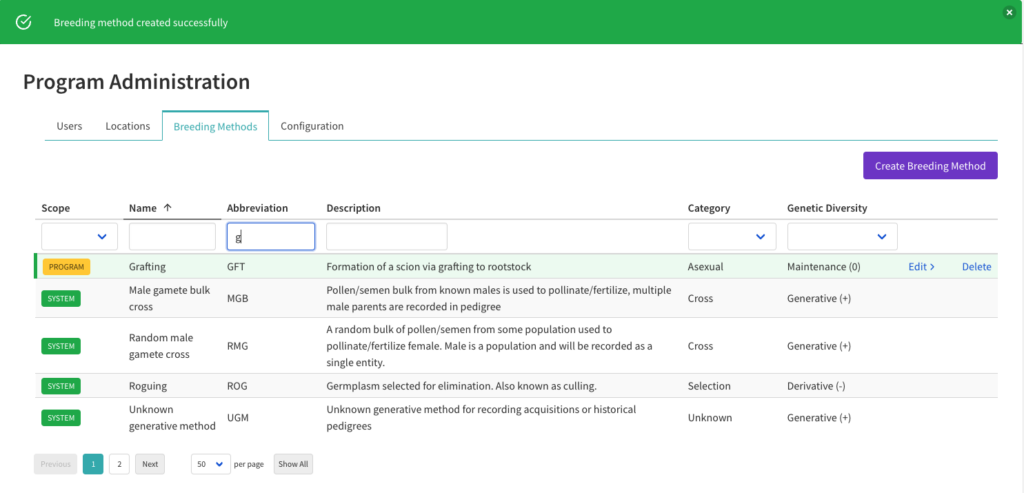
Program Configuration #
Configuration #
Upon establishment of a program, before ontology terms have been established, a breeder has the option to subscribe a program to a shared ontology.
Breeding Insight recommends that institutions with multiple breeding program per species share a single ontology so that variables are annotated with a standardized nomenclature, allowing data to be interpretable, interoperable, and reusable. The program that manages (adds, edits, and archives) ontology terms should be established as the “sharer”. The “subscriber” programs will need to coordinate with the appropriate people in the sharing program to request ontology updates.
![]() Navigate to Program Administration and click on the “configuration” tab.
Navigate to Program Administration and click on the “configuration” tab.
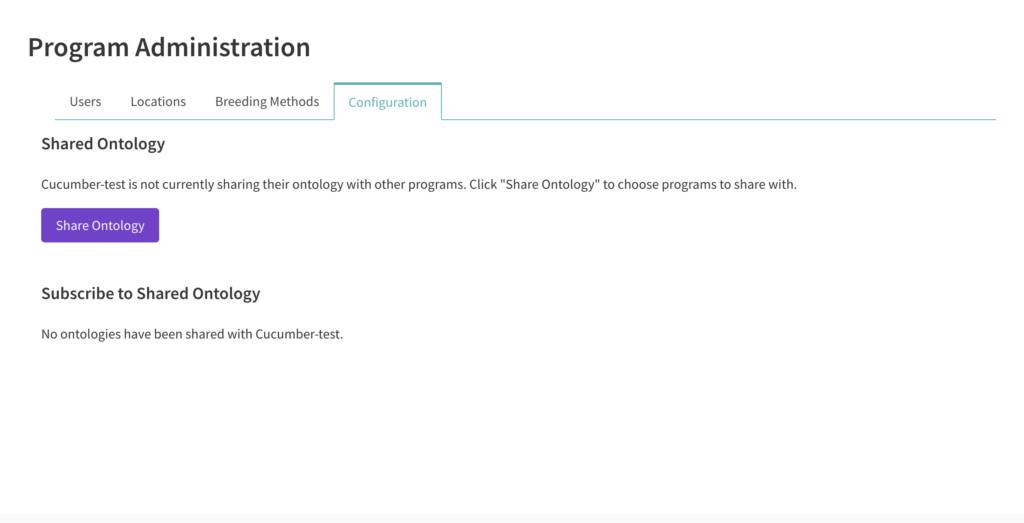
Share Ontology #
![]() Select a program with whom to share your ontology. Save.
Select a program with whom to share your ontology. Save.
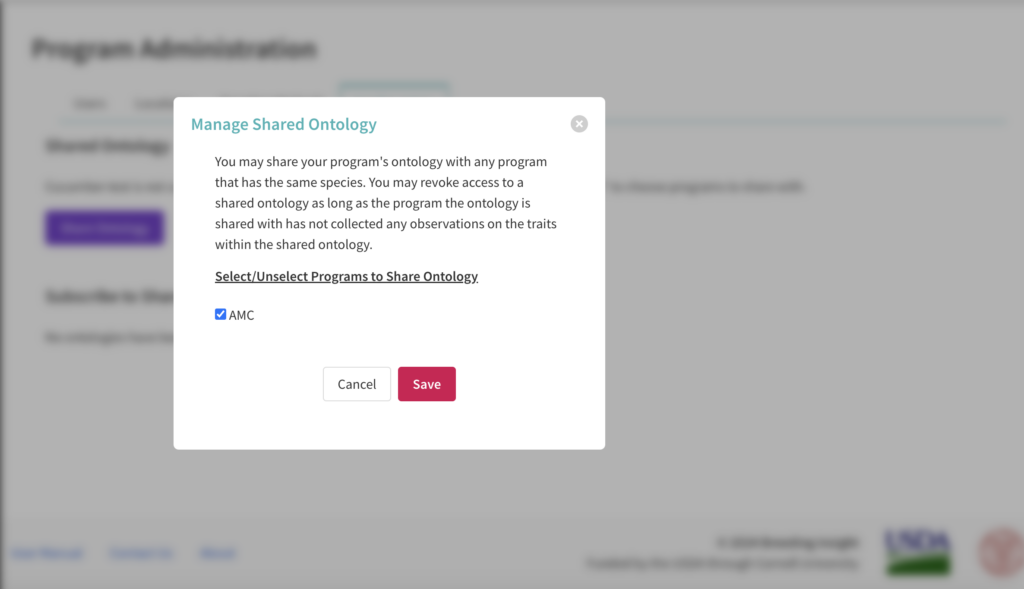
Subscribe to Shared Ontology #
![]() Choose an ontology to which to subscribe. Note that another program will first need to share their ontology with you (see above). Save.
Choose an ontology to which to subscribe. Note that another program will first need to share their ontology with you (see above). Save.
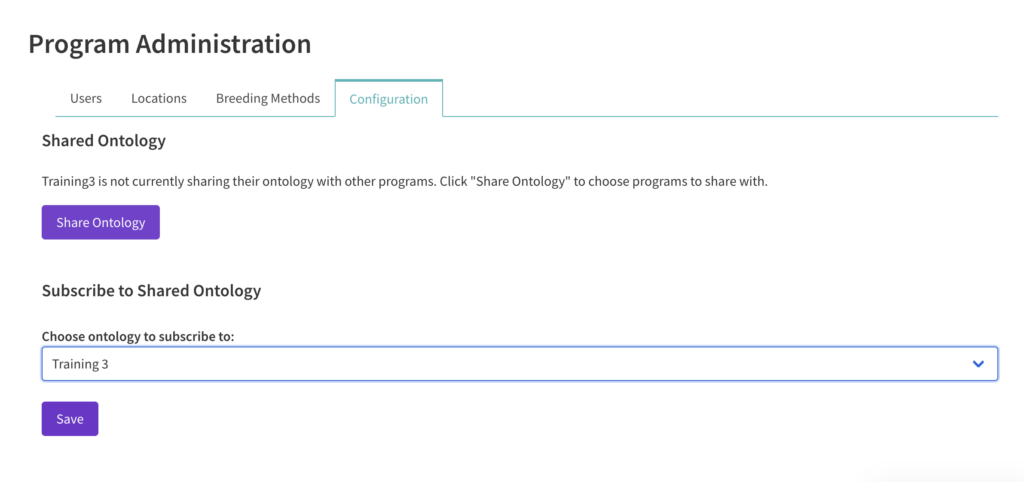
Unsubscribe from Shared Ontology #
Breeders have the ability to unsubscribe from an ontology until ontology terms are in use in experiments.
![]() Select “Unsubscribe” button.
Select “Unsubscribe” button.
